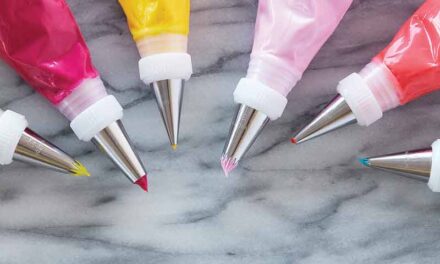So many delicious cake and cookie recipes begin with one simple, yet important, ingredient: room temperature butter.
Room temperature butter is essential for making smooth batter and lightly textured baked goods. It’s firm enough to maintain its shape but soft enough to be whipped and creamed with ease. So how do you soften frozen butter to room temperature without melting it?
These tips and tricks for how to soften butter quickly will help you churn out better bakes in no time!
Why is room temperature butter important?
Room temperature butter is important for the first stage of most baking recipes – creaming the butter and sugar.
The harsh crystals of sugar work to aerate your butter, digging small pockets into the butter which help trap air. While your cake or cookies are in the oven, the trapped air expands, thus giving you fluffy and tender baked goods. Recipes that call for softened butter include chocolate chip cookies, soft yellow cake, homemade buttercream frosting, and more.
If the butter is too cold, the sugar can’t penetrate the butter and air pockets are unable to form. This could result in clumpy batter or uneven bakes. The same goes for butter that is too warm. Melted or liquid butter will thin out your batter, giving you ultra-flat cookies or cakes that are dense and uneven.
How to soften butter to room temperature
So what’s the best way to soften your butter to that perfect temperature? There are a few ways to go about it:
1. Soften Butter in the Microwave
The quickest way to soften butter is with the microwave method. Heat your butter in the microwave for 2 to 5 second increments on the lowest power until reaching the desired temperature. However, be careful not to melt your butter to a liquid state.
2. Soften Butter in a Double Boiler
Bring a pot of water to a slight simmer (not boiling) then remove from heat. Place cubed cold butter in a large glass bowl and set it over the pot of hot water. Remove the bowl from the pot when the desired temperature is reached. A double boiler can help bring your butter to room temp, but you must be careful not to melt it completely.
3. Cutting the Butter
Perhaps the easiest and best way to soften your butter is to simply let it sit out at room temperature. Take your stick of butter out of the fridge about an hour before you begin baking. If your kitchen is too hot and your butter melts too much, put it back in the fridge to harden slightly.
For a quicker take on this method, cut your slick of butter into slices and arrange on a plate. Place near the oven or in a warm part of your kitchen to soften.
How to test if butter is ready
1. Fingerprint Test
This is a quick way to make sure your butter is soft enough for creaming. Simply press your finger into the butter. If it makes an indent easily without your finger sliding anywhere, you’re good to go. If your finger comes out greasy or it goes through the butter easily, your butter may be too soft. Place it back in the fridge to firm up a bit before trying again.
2. Thermometer Test
For a more scientific method, you can use a thermometer to measure the temperature of your butter. For proper room temperature butter, you’re looking for an internal temp somewhere between 65 and 67 degrees F.
When to use chilled or melted butter
There is a time and a place to use cold or melted butter rather than room temperature butter.
Delicious flaky layers in pie crusts and pastries come from using small pieces of cold butter. This butter should be very firm and cold to the touch. Using cold butter for pastries and crusts gives the butter time to melt during baking. This leaves behind small air pockets that produce flaky layers.
Melted butter is key to making chewy cookies and bars. It should be fluid and slightly warm to the touch, but not hot. Using butter that’s too hot could ruin other ingredients in your batter. For example, it can cook your eggs or curdle other dairy products. Melted butter is also great for holding a mixture together, like a graham cracker crust or rice cereal treats.
Ready to put your skills to the test? This Classic White Cake or Basic Yellow Cake are made even better using room temperature butter. Or try this Louisiana Crunch Cake or these delicious Oat Flour Chocolate Chip Cookies!
What’s your tried and true method for soft butter? Let us know in the comments below and tag us @wiltoncakes on Instagram so we can see your delicious creations!






